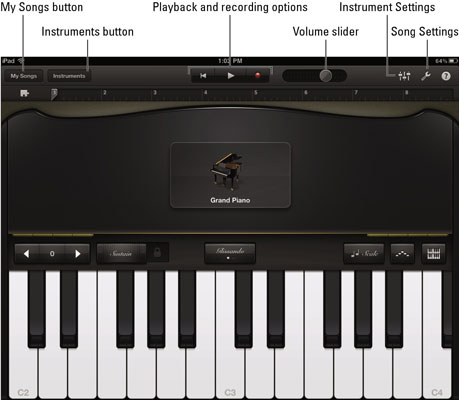

Bit depth refers to the number of bits used to represent each sample of audio. When it comes to digital audio, bit depth is a critical factor in determining the quality of the sound. Exporting Your 16 Bit Music Understanding 16 Bit Music With a little practice and experimentation, you can create your own unique 16-bit tracks that are sure to impress.ħ. GarageBand offers a range of tools and features to help you create and edit your music, including MIDI editing, quantization, and automation.

Once you have your instruments and sounds set up, you can start composing your 16-bit music.

You can also import your own samples and recordings to use in your project. GarageBand offers a range of virtual instruments, including synthesizers, drums, and basses, that can be used to create 16-bit music. From there, you can choose from a variety of instruments and sounds to create your music. To get started, you’ll need to open GarageBand and create a new project. With its intuitive interface and powerful features, GarageBand is an ideal tool for creating music in various genres, including 16-bit. This lets users use several loops together, even if the loops were recorded at different keys and different speeds.Are you interested in creating 16-bit music with GarageBand? Whether you’re a seasoned musician or just starting, this guide will walk you through the process of making 16-bit music with GarageBand. GarageBand automatically matched the temopo and key of the region to the project's tempo and key. When you add an Apple Loop to a project, GarageBand creates a region for the loop in the timeline. It is possible to extend a loop to fill any amount of time in a project, and they can be combined with other loops or recordings in your project. Loops contain musical patterns that can be repeated seamlessly. It contains pre-recorded music files, organized into categories, that can be used to easily add beats, rhythm parts, and other repeating patterns to a project. Apple LoopsĪpple Loops Utility is a companion audio utility to GarageBand. You are easily able to record as many takes as necessary, with each take appearing as its own track. This is useful if you want to pair a voice or an instrument to a specific area of your project. You can record multiple takes over a cycled region, then decide which take is the best. Press the play button to start or stop your cycle region playback. This chosen region will be repeated until playback is stopped. Let's take a quick look at GarageBand's interfaceĬlick and drag the yellow bar to move the range or drag the edges to change the length of the range. For now, just leave it as defualt (Record using a microphone or line input), and press Create. The GarageBand will prompt you to create your first track. Users can choose the scale (major or minor) for the project.Ĭlick Choose. The key pop-up menu lists keys for the natural notes (such as C, D, and E) and for chromatic keys (such as F-sharp and E-flat). Key Signature: the key defines the central note to which the other notes relate. The default is 4/4, the most commonly used time signature. The upper(left) number of the fraction controls the number of beats in each measure, and the lower(right) number controls the beat value(the length of the note that gets one beat). Time Signature: the signature defines how musical time is divided into measures and beats. The defualt is 120 bpm (tempo di marcia), which is a common tempo in music.

Tempo: the speed at which a piece of music is or should be played.


 0 kommentar(er)
0 kommentar(er)
